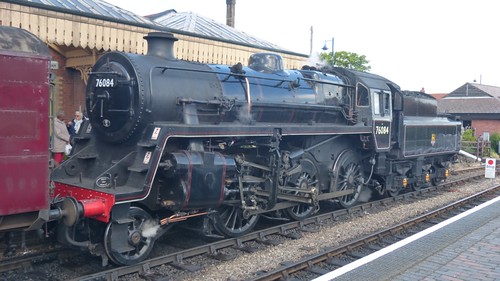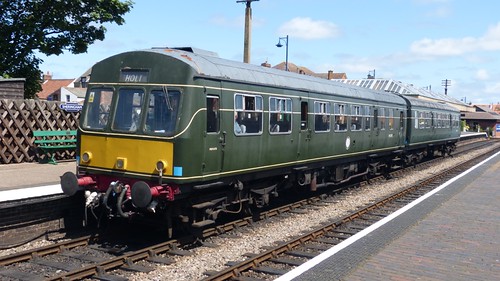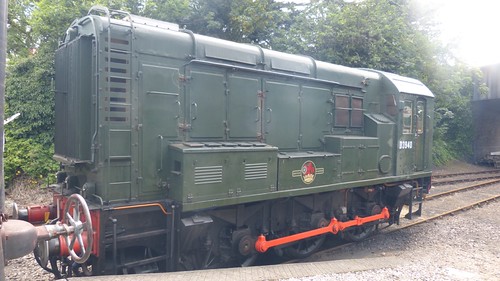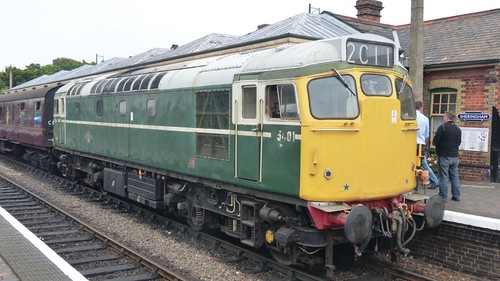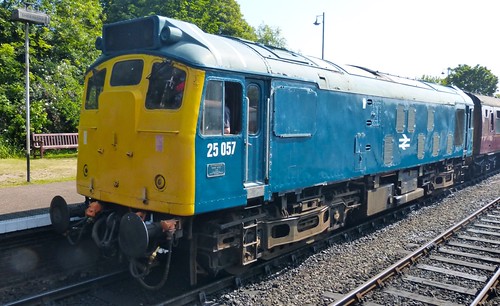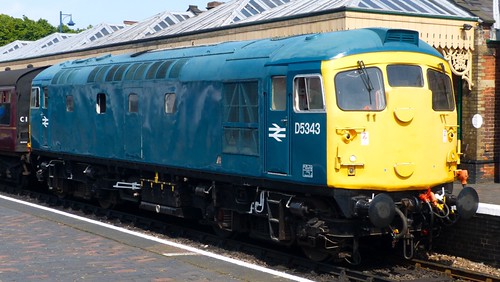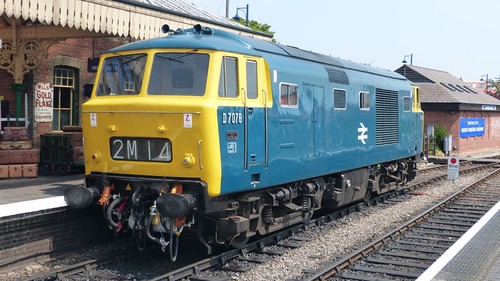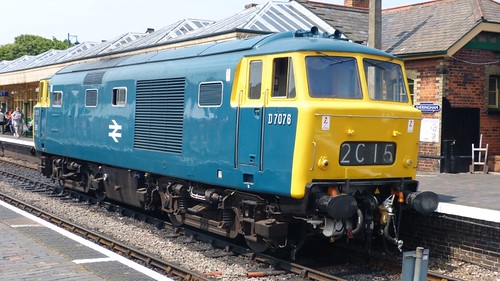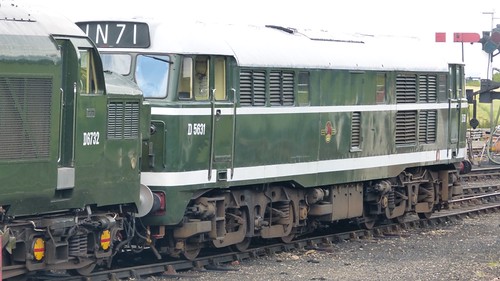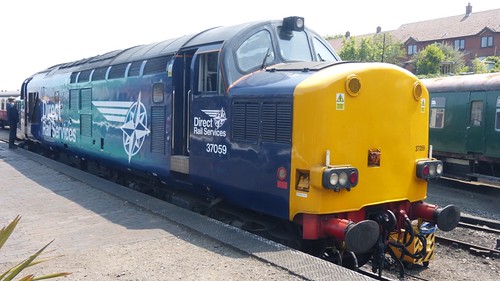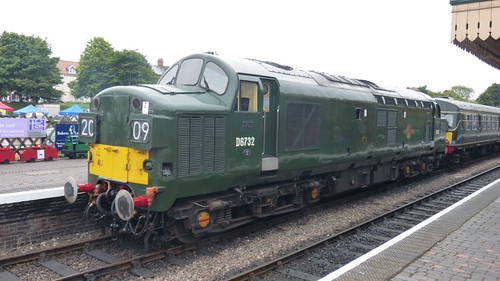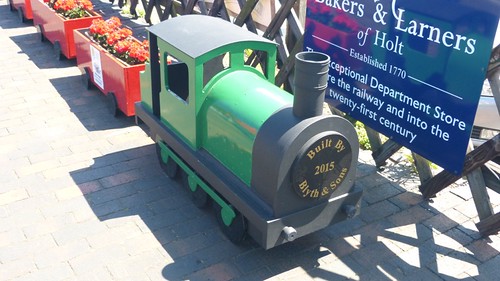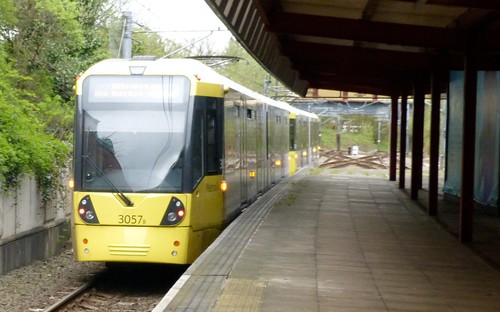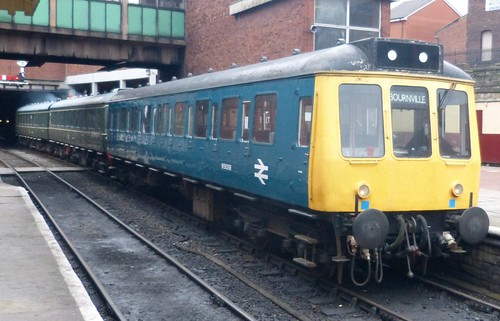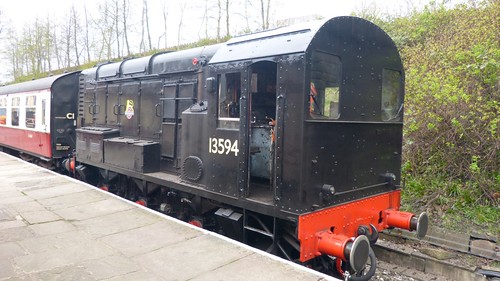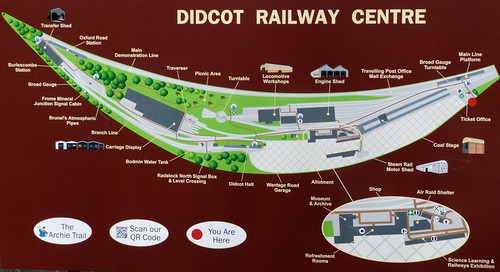A short holiday in the Norfolk coast gave me a chance to take a look at the ‘North Norfolk Railway’ (NNR) initially on a normal service day and later in the week on a diesel gala day.
76084
A British Railways (BR) Standard class 4 2-6-0 loco. Owned by the ‘Locomotive Company Limited’.
Built at Horwich works in 1957, it spent most of its short working life (10 years) based in Northwest England.
M51192
A Metro Cammell Class 101 DMU built in 1957.
Unlike today where the front of loco’s and units are covered in yellow paint. At the time these entered service, the small yellow panel under the cab window was considered sufficient.
D 3940
A Class 08 diesel shunter dating from 1960 when it was built at Derby.
Prior to being preserved it was 08772.
D 5401
A Class 27 loco that was formerly 27064, 27210 and 27116.
Built by the Birmingham Railway & Carriage Company (BRCW) in 1962. Powered by a Sulzer 6LD28B engine. The class numbered 69.
Initially working in the Midlands it moved to Scotland in 1969 where as 27210, it worked on the Glasgow /Edinburgh push pull services.
Withdrawn from BR service in 1986.
25057
A Class 25 loco built at Derby works in 1963. withdrawn in 1987 when it was based at Crewe, it is now based on and owned by the ‘NNR plc’.
D5343
A Class 26 loco that was later numbered 26043. Built by the Birmingham Railway & Carriage Company (BRCW) at Smethwick in 1959.
The loco spent most of its working life in Scotland being withdrawn in 1993.
Purchased by the ‘Cotswold Mainline Diesel Group’ the loco normally resides at Toddington on the ‘Gloucestershire and Warwickshire Railway’.
D 7076
A Class 35 diesel hydraulic loco built specifically by Beyer Peacock in 1962 for ‘BR’ Western Region.
Powered by a Bristol Siddeley built Maybach designed engine model No. MD 870. Like all diesel hydraulics, it suffered early withdrawal in 1973.
Now preserved on the ‘East Lancashire Railway’.
D5631
A Class 31 loco that was later 31207. Built by Brush as a mixed traffic loco in 1960.
Powered by Mirrlees 1,250 HP engines that were eventually replaced with English Electric engines when the original engines proved unreliable.
Having spent much of its working life in East Anglia it is fitting that it is preserved on the ‘NNR’ and owned by the ‘Midland & Great Northern Railway Society’.
37059
A Class 37 loco owned by ‘Direct Rail Services’ (DRS) of Carlisle.
Built in 1962 by English Electric and powered by that company’s 12CSVT engine.
One of the most successful early designs that remain in service today. The loco was subject of an extensive overhaul in 2014 at Derby RVEL.
D 6732
later 37032.
A Class 37 built by English Electric and powered by that company’s 12CSVT engine
Dating from 1962, it started work at Hull Dairycoates depot and was withdrawn from Tinsley depot.
The loco received a heavy general overhaul in 2013 and is owned by the ‘Anglia Type Three Association’.
2015
This delightful model saddle tank at the head of a trainload of wagons full of geraniums graces platform 2.
It is nice to see that a sense of humour is still in fashion.

